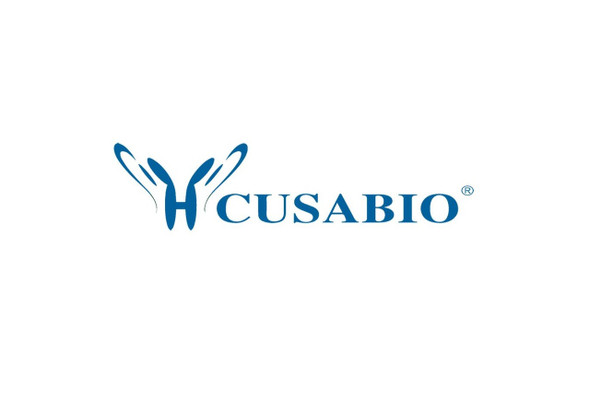Cusabio Human Recombinants
Recombinant Human Histone H2B type 1-C/E/F/G/I (HIST1H2BC), partial | CSB-RP016944h
- SKU:
- CSB-RP016944h
- Availability:
- 13 - 23 Working Days
Description
Recombinant Human Histone H2B type 1-C/E/F/G/I (HIST1H2BC), partial | CSB-RP016944h | Cusabio
Alternative Name(s): Histone H2B.1 AHistone H2B.a ;H2B/aHistone H2B.g ;H2B/gHistone H2B.h ;H2B/hHistone H2B.k ;H2B/kHistone H2B.l ;H2B/l
Gene Names: HIST1H2BC
Research Areas: Epigenetics and Nuclear Signaling
Organism: Homo sapiens (Human)
AA Sequence: PEPAKSAPAPKKGSKKAVTKAQKKDGKKRKRSRKESYSVYVYKVLKQVHPDTGISSKAMGIMNSFVNDIFERIAGEASRLAHYNKRSTITSREIQTAVRLLLPGELAKHAVSEGTKAVTKYTSS
Source: E.coli
Tag Info: N-terminal GST-tagged
Expression Region: 2-125aa
Sequence Info: Partial
MW: 40.6 kDa
Purity: Greater than 90% as determined by SDS-PAGE.
Relevance: Core component of nucleosome. Nucleosomes wrap and compact DNA into chromatin, limiting DNA accessibility to the cellular machineries which require DNA as a tplate. Histones thereby play a central role in transcription regulation, DNA repair, DNA replication and chromosomal stability. DNA accessibility is regulated via a complex set of post-translational modifications of histones, also called histone code, and nucleosome rodeling.Has broad antibacterial activity. May contribute to the formation of the functional antimicrobial barrier of the colonic epithelium, and to the bactericidal activity of amniotic fluid.
Reference: Isolation and characterization of two human H1 histone genes within clusters of core histone genes.Albig W., Kardalinou E., Drabent B., Zimmer A., Doenecke D.Genomics 10:940-948(1991)
Storage: The shelf life is related to many factors, storage state, buffer ingredients, storage temperature and the stability of the protein itself. Generally, the shelf life of liquid form is 6 months at -20?/-80?. The shelf life of lyophilized form is 12 months at -20?/-80?.
Notes: Repeated freezing and thawing is not recommended. Store working aliquots at 4? for up to one week.
Function: Core component of nucleosome. Nucleosomes wrap and compact DNA into chromatin, limiting DNA accessibility to the cellular machineries which require DNA as a template. Histones thereby play a central role in transcription regulation, DNA repair, DNA replication and chromosomal stability. DNA accessibility is regulated via a complex set of post-translational modifications of histones, also called histone code, and nucleosome remodeling.; FUNCTION
Involvement in disease:
Subcellular Location: Nucleus, Chromosome
Protein Families: Histone H2B family
Tissue Specificity:
Paythway:
Form: Liquid or Lyophilized powder
Buffer: If the delivery form is liquid, the default storage buffer is Tris/PBS-based buffer, 5%-50% glycerol. If the delivery form is lyophilized powder, the buffer before lyophilization is Tris/PBS-based buffer, 6% Trehalose, pH 8.0.
Reconstitution: We recommend that this vial be briefly centrifuged prior to opening to bring the contents to the bottom. Please reconstitute protein in deionized sterile water to a concentration of 0.1-1.0 mg/mL.We recommend to add 5-50% of glycerol (final concentration) and aliquot for long-term storage at -20?/-80?. Our default final concentration of glycerol is 50%. Customers could use it as reference.
Uniprot ID: P62807
HGNC Database Link: HGNC
UniGene Database Link: UniGene
KEGG Database Link: KEGG
STRING Database Link: STRING
OMIM Database Link: OMIM









